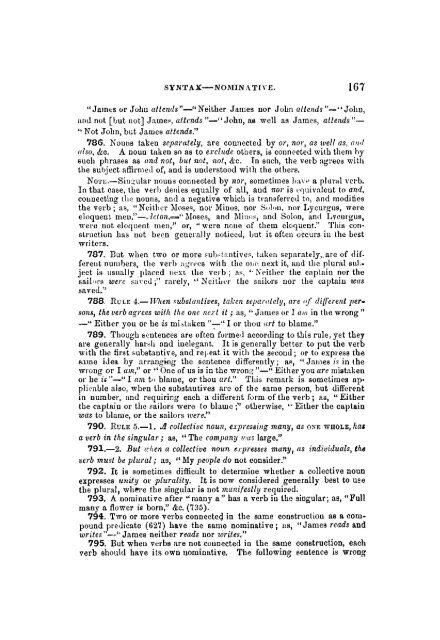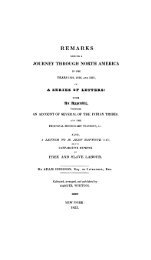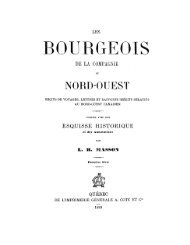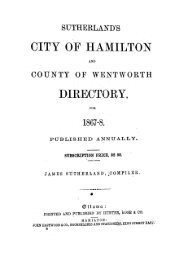alytical practical grammar - Toronto Public Library
alytical practical grammar - Toronto Public Library
alytical practical grammar - Toronto Public Library
You also want an ePaper? Increase the reach of your titles
YUMPU automatically turns print PDFs into web optimized ePapers that Google loves.
SYNTAX-NOJ\IINATIVE. 167<br />
"James or John attends "-"Neither James nor John attends "-"John,<br />
and not [bnt not] Jame", attends "-" John, as well as James, attends"<br />
"Not John, but Jame~ attends."<br />
786. Nouns taken separately, are connected by or, nor, as well as, 0"'/<br />
also, &c. A noun taken so as to exclude others, is connected with them hy<br />
such phrases as and not, bUI not, not, &c. Tn such, the verb agrec~ with<br />
the subject affirmell of, and is understood with the others.<br />
NO'fE.-Sin~ular nouns connected by nor, sometimes ba\,,' a plural verb.<br />
In that case, the verb dellies equally of all, and nor is equivalent to and,<br />
counecting the nouns, and a negative which is tmnsferred tn, and modi ties<br />
the verb; as, "Neither Moses, nor Minos, nor Sul'Jll, nor Lycurgus, were<br />
eloquent men."-.iclon.=" Jlloses, and Min"" and Solon, and Lvcurgus,<br />
wero not eloquent men," or, "were none of them eloquent." This construction<br />
has not been generally noticeu, uut it often occurs in the best<br />
writers.<br />
787. But when two or more Euh,t~ntives, taken separately,. are of dif.<br />
fereut numbers, the verb agrees with the 0,,(, next it, aud the plural su!'.<br />
ject is usuullyplaced next the veJ'b; as, ,. Neither the captain nor the<br />
sail"r8 were s:n'cu i" rarely, ., N citLer the sailurs nor the captaill was<br />
Baved."<br />
788. RULE 4.-TVlten substantives, taken separately, are of diOerent persons,<br />
the verb agrees with the one next it; as, "James or I alii in the wrong"<br />
_u Either you or he is mbtaken "-;-" I or thou art to blume."<br />
789. Though sentences are often furme,} according to this rule, yet they<br />
are generally har"h and iuelegant. It is generally better to put the verb<br />
with the first substauti\'e, and re~eat it with the second; or to express the<br />
same idea by urrunging the sentence differently; aB, "James is in the<br />
wrong or I am," or "One of us is in the wron" "-" Either you arc mistaken<br />
or he i. "-" I am t" blame, or thou art." This remark is sometimes applie-aLle<br />
also, when the suhstantives are of the same person, but different<br />
in number, and requiring each a different form of the verb; a8, "Either<br />
the captain or the eailors were to blame;" otherwise, "Either the captain<br />
was to Llame, or the sailors were."<br />
790. RULE 5.-1 . .d collective noun, expressing many, as O~E WHOLE, ha&<br />
a verb in the singular; as, "The company /I'as large."<br />
791.-2. But Ichen a collective noun expresses many, as individuals, the<br />
verb must be plural; as, "My people do not consider."<br />
792. It is sometimes difficult to determine whether a collective noun<br />
expresses unity or plurality. It is now considered generally best to use<br />
the plural, wh~e the singular is not manifestly required.<br />
793, A nominative after "many a" has a verb iu the singular; as, uFull<br />
many a flower is born," &c. (735).<br />
794. Two or more verbs connectecj in the same construction as a compound<br />
pre,Jicate (627) have the Bame nominative; a8, .. James reads and<br />
writes "-" James neither reads nor writes."<br />
795. But when verbs are not connected in the same construction, each<br />
verb should have its own nominative. Tbe following sentence is wrong
















